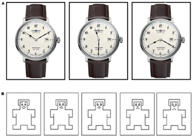NEWS in SCIENCE
Is your watch clocking in on your emotions?
By K.G.
Have you ever watched a commercial or saw an ad in a magazine and thought, “I have to buy this”? Well there could be a reason behind it! A psychological study was done to show the effects of setting the watch in an ad or store to a certain time would have on humans. The first study showed that watches set to 10:10 had a positive effect on the shopper’s emotion and desire to buy the object. The watch set to 8:20 had no effect on the shopper.
Why would the setting affect this you ask? A second study was conducted to show that the majority of participants in the study thought the watch set to 10:10 looked like a smiling face while the watch set to 8:20 looked like a sad face.
The study also had a control watch set to a neutral time setting of 11:30 that did not resemble any face or emotion. The buyer’s emotions or desire to purchase the object was not affected by the control watch.

The participants in the study were shown 20 different watches with the various time settings of 10:10, 8:20, and 11:30. The participants all felt significantly stronger emotions of pleasure towards to watches set to 10:10. The watch resembling a sad face and set to 8:20 did not affect the viewers pleasure or desire to buy the watch negatively or positively.
Recent scans of the brain showed that masked facial expressions, such as those on the watches, can change a human’s behavior. Their behavior is changed unconsciously by activating certain parts of the brain that control your emotions.
So, the next time you are out shopping for a watch, pay attention to these details and make sure your emotions aren’t being played to alter your desire and intention to buy the object.
Karim, A. A., Lutzenkirchen, B., Khedr, E., & Khalil, R. (2017). Why Is 10 Past 10 the Default Setting for Clocks and Watches in Advertisements? A Psychological Experiment. Frontiers In Psychology,8(1410). doi:10.3389/fpsyg.2017.01410 https://www.ncbi.nlm.nih.gov/pmc/articles/PMC5572348/
Please send any questions or comments to Dr. Spitzer (spitzern@marshall.edu )
Note: Any opinions expressed in these articles are those of the individual authors, and do not necessarily represent those of Dr. Spitzer, the Department of Biological Sciences, or Marshall University.